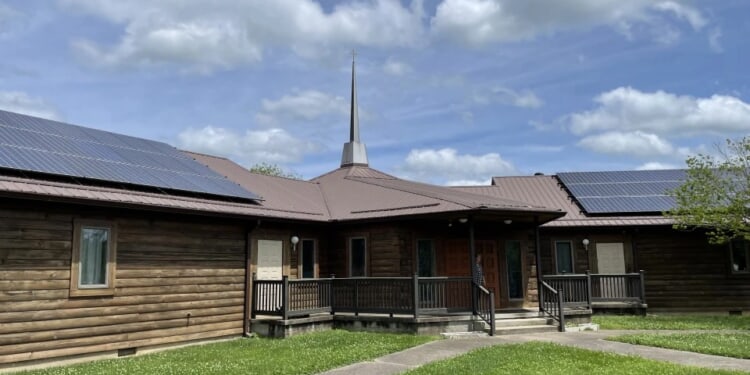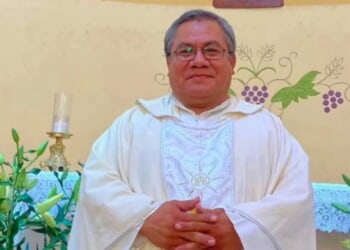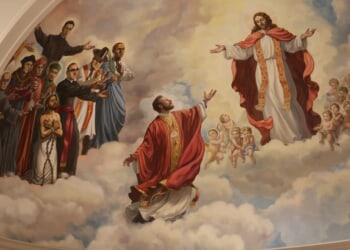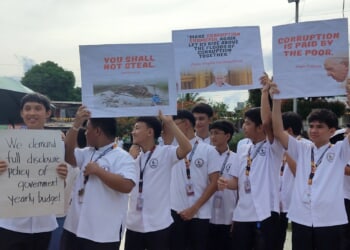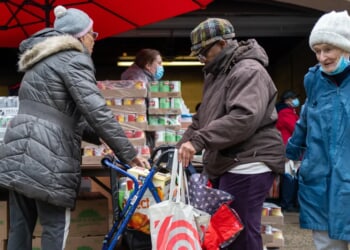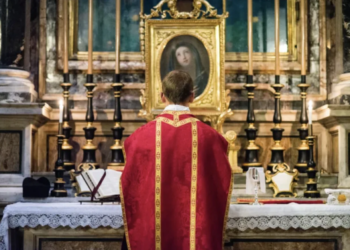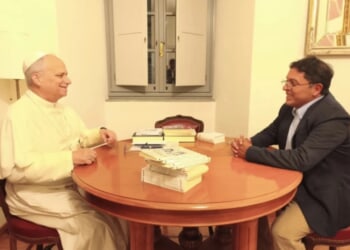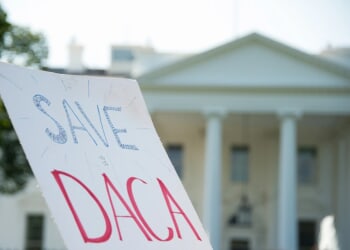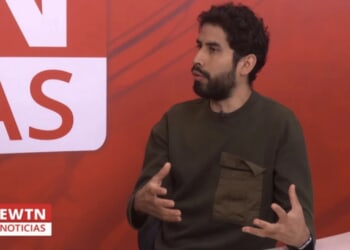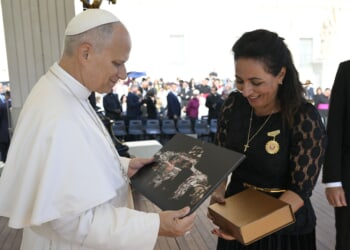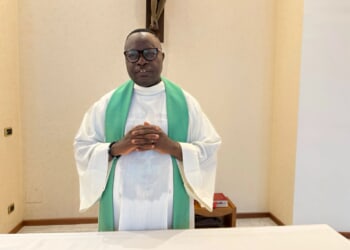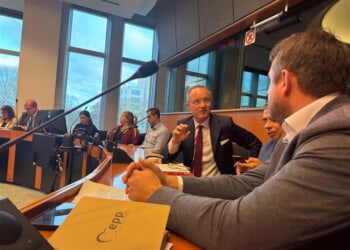Washington, D.C. Newsroom, Oct 14, 2025 /
06:00 am
The Diocese of Lexington has developed an ambitious plan to make all of its buildings net-zero by 2030 because, it noted, as Scripture says: “The earth and all in it belongs to God.” The plan includes all buildings of the 59 parishes in the diocese, spanning over 50 counties in central and eastern Kentucky.
The plan is a direct response to Pope Francis’ 2015 encyclical Laudato Si’ (“On Care for Our Common Home”), which called on the global Catholic Church to engage in dialogue about the future of the planet. Within the writings, Pope Francis urged the Church to acknowledge environmental challenges.
The diocese was inspired by Laudato Si’ No. 217, which says “living our vocation as protectors of God’s handiwork is a life of virtue,” Josh Van Cleef, director of the Office of Peace and Justice for the diocese, told CNA. “It is not a secondary dimension of Christian life.”
The Diocese of Lexington’s plans stem from the seven goals of Laudato Si’, which include response to the cry of the earth, response to the cry of the poor, ecological economics, adoption of sustainable lifestyles, ecological education, ecological spirituality, and community resilience and empowerment.
Inspiration from Pope Francis
Since the encyclical was published, dioceses and archdioceses across the country have implemented ways to live out Pope Francis’ call. As this year marks the 10-year anniversary of the encyclical, Bishop John Stowe of Lexington and his leadership team have laid out one of the most ambitious plans yet.
Van Cleef, who leads the Respect Life Ministries for the diocese, said the idea began to develop in 2024. Each parish was asked and encouraged by leaders including the bishop to form Laudato Si’ teams. The teams then carried out “parish assessments based on the seven goals of Laudato Si’, to do listening sessions, and to come up with concrete action plans.”
The parishes “did not come up with a ‘net-zero plan’ but just a plan for them to implement care for creation.” These plans included “looking at what concretely they can do from their lighting, like moving to LED [light bulbs], to the different programming they can do to promote this as a faith issue in the parishes.”
“We’ve seen a lot of our parishes really take this on, and it’s been pretty inspiring,” Van Cleef said. “Then as a diocese, the action plan was published on Jan. 1, 2025, which included plans from each one of the 59 parishes, plus the diocese-wide commitments.”
The biggest undertaking within the diocese’s goals is “to move all facilities to net-zero emissions.” Diocese leaders have been working for more than a year with a group of experts in the area of sustainability to accomplish it.
Net-zero is defined by the diocese as “the balance between the amount of greenhouse gas emissions that an organization generates and the amount removed from the atmosphere.”
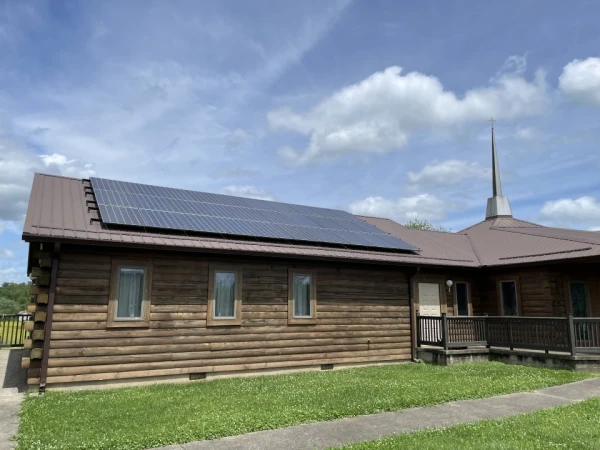
Net-zero plan
The four steps the diocese is taking to shape its net-zero approach include measuring, efficiency, solar development, and transitioning from gas to electric. Measuring is the first step and “identifies the main sources of emissions, calculates the overall carbon footprint, and sets the stage for developing an effective action plan,” according to the published plan.
Efficiency will be tracked through an energy audit from 2025–2026. The diocese will conduct “evaluations of energy use within a building with the goal of identifying areas where energy is being wasted,” the report explained.
An essential part of the plan is the implementation of solar power, which “offers a pathway for the transition to renewable energy.” Finances will be discussed, including grants, low-interest financing options, and energy service agreements “to ensure that projects can fit within a location’s budget.”
(Story continues below)
Subscribe to our daily newsletter
The diocese will carry out a shift from gas to efficient electric to “facilitate the diocese’s overall movement towards renewable energy.” Once again, the diocese will “identify available grants, rebates, and other financing options to assist locations in this transition.”
The diocese is committed to the steps because as Catholics, “we’re not opting in to care for creation for partisan reasons, and we don’t get to opt out,” Van Cleef explained. “For us, we’re all in because of our faith. And when we look at Scripture, we see Psalm 24:1 say: ‘The earth and all in it belongs to God.’”
“Then we read in Genesis that our job is to ‘till and keep.’” Therefore, we must “cultivate and protect what belongs to God,” Van Cleef said. “It is a matter of faith. When we look to Pope Francis, Laudato Si’, and Pope Leo, it is clear that the Church is called to urgent and decisive action.”
“We know that all creation communicates God’s glory, and it is a sacred place where we encounter God.”
More Laudato Si’ inspiration
The Diocese of Lexington’s plan is in motion and will continue to develop over the coming years to hopefully reach its goal by 2030, according to the diocese. While parts of its mission will take time, other practices Lexington and a number of other Catholic communities are carrying out are active now.
The Archdiocese of Washington, D.C., created an action plan that provided a number of options for parishes, schools, and families “to become better stewards of God’s creation, help reverse climate change, and work towards sustainability as proclaimed in Laudato Si’’.” This included a volunteer group called Laudato Trees, which began in 2022 to increase the tree canopy in the D.C. area by planting trees on Catholic church and school properties.
The Diocese of Sacramento, California, began to utilize solar panels in 2022, including at its memorial center at St. Anthony Parish. Soon after, a diocesan Creation Care Committee was established and the diocese enrolled in the Vatican’s Laudato Si’ Action Platform.
Parishes in the Diocese of Tucson, Arizona, also implemented plans by adding solar panels to buildings around the community in 2024. Our Mother of Sorrows Catholic Church was the flagship parish, but quickly after a number of others across the diocese joined.
Other communities across the nation including the Diocese of Joliet, Illinois, and the Archdiocese of Atlanta wrote plans that offered everyday actions for parishes and families to carry out in order to further the seven goals. They called for the faithful to recycle, focus on energy production, cut back on toxic and plastic items, replace gas-fueled appliances with electric ones, and to spread the message of Laudato Si’.

